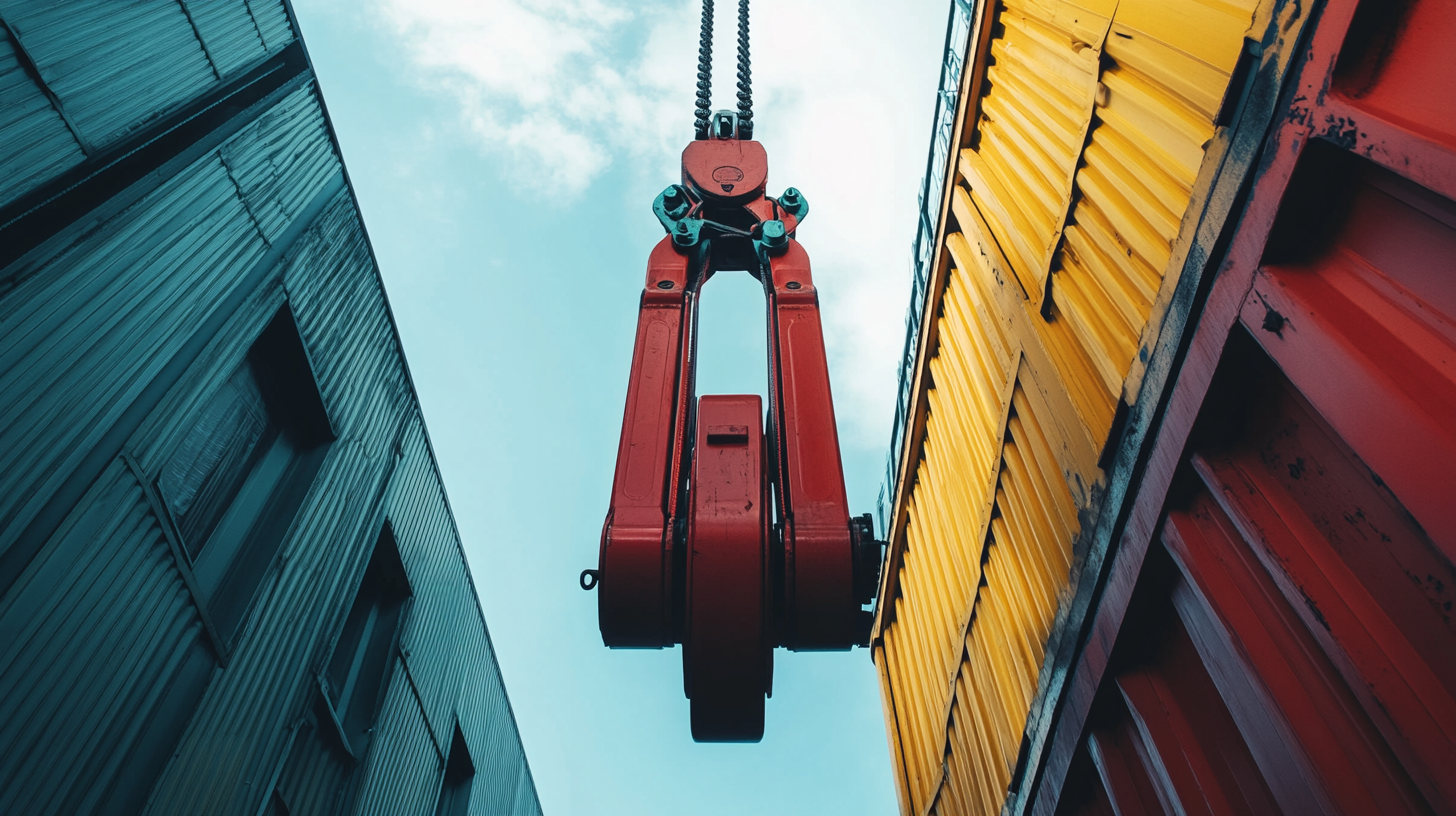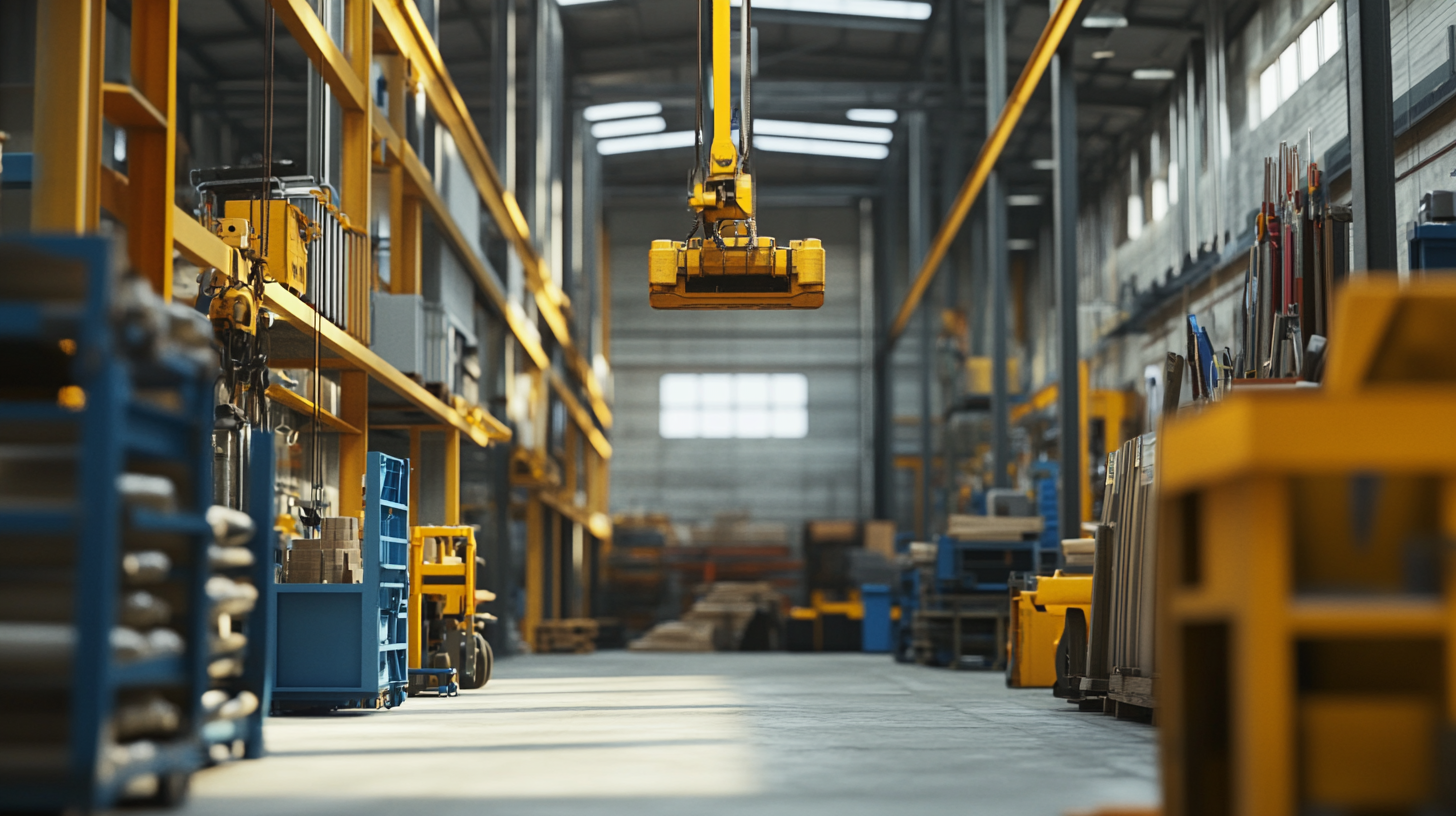Exploring Diverse Options for Essential Lifting Supply Solutions
In today’s ever-evolving industrial landscape, the need for reliable and efficient lifting supply solutions has never been more critical. As businesses across various sectors strive to optimize their operations and enhance safety standards, the variety of lifting supply options available becomes a focal point for decision-makers. From construction sites to warehouses, understanding the diverse lifting supply solutions can lead to improved performance, reduced downtime, and increased worker safety. This blog aims to explore the various types of lifting supplies available, highlighting their unique advantages and applications in different industries.
As we delve into the world of lifting supply solutions, it is essential to recognize the significant impact that the right equipment can have on operational efficiency. Whether it is through cranes, hoists, or slings, the choice of lifting supplies can dictate not only productivity levels but also overall safety in the workplace. We will examine how selecting appropriate lifting supplies tailored to specific tasks can mitigate risks and enhance workflow, ensuring that organizations can meet both their short-term needs and long-term goals. Join us as we navigate the diverse options in lifting supply solutions and uncover the ideal applications for your operational demands.

Innovative Types of Lifting Equipment for Various Industries
The lifting equipment industry has undergone significant transformation, introducing innovative solutions tailored to meet the unique needs of various sectors. Recent reports from the market analysis firm Mordor Intelligence indicate that the global lifting equipment market is projected to reach approximately $80 billion by 2025, growing at a compound annual growth rate (CAGR) of around 5.4%. This growth is driven by advancements in technology and an increasing demand for efficient material handling across industries such as construction, manufacturing, and logistics. One of the standout innovations is the introduction of electric hoists, which are gaining traction due to their efficiency and eco-friendliness. According to ResearchAndMarkets, the electric hoist market alone is expected to witness a CAGR of over 6% from 2021 to 2026. These devices not only reduce operational costs but also contribute to workplace safety by minimizing the risk of manual handling injuries. Furthermore, the development of smart lifting equipment integrated with IoT technology is enabling real-time monitoring and predictive maintenance, thereby enhancing operational efficiency. In the construction sector, telehandlers are becoming increasingly popular. They combine the functionalities of a crane and a forklift, offering versatility for lifting materials in tight spaces. The Telehandler market is forecasted to grow significantly, with a report by Fortune Business Insights estimating it to reach $9 billion by 2028. This surge is largely attributed to the rising demand for rental services and increased investments in infrastructure development across emerging markets. Moreover, the advancements in lightweight lifting solutions, such as aluminum cranes and composite lifting slings, are revolutionizing the aerospace and automotive industries by improving fuel efficiency and reducing overall weight. According to the International Organization for Standardization (ISO), these innovations not only aid in safer material handling but also play a crucial role in adhering to safety and environmental regulations in high-stake industries. The evolution of lifting equipment continues to shape how industries operate, driving improvements in productivity and safety.

Key Considerations When Selecting Lifting Supply Solutions
When it comes to selecting lifting supply solutions, there are several key considerations that can significantly impact operational efficiency and safety in various industries. The global lifting equipment market, which is projected to reach USD 60 billion by 2026, indicates a growing demand for reliable lifting solutions, underscoring the importance of careful evaluation when sourcing these products.
One critical factor to consider is the type of lifting equipment required for specific tasks. For instance, hydraulic lifts are typically favored for heavy loads due to their superior lifting capacity and stability. Reports from the International Organization of Standards suggest that using suitable equipment can reduce workplace accidents by up to 25%, highlighting the necessity of selecting equipment that adheres to stringent safety standards.
Another important aspect is the compatibility of lifting supplies with existing systems. Effective integration of equipment not only maximizes productivity but also minimizes downtime during operations. According to a survey conducted by the Lifting Equipment Engineers Association, 40% of project delays are attributed to improper equipment selection. Therefore, understanding the specifics of the operational environment and ensuring that the chosen lifting solutions are adequate for the job is vital for project success.
Furthermore, the durability and maintenance requirements of lifting equipment should not be overlooked. Regular maintenance is critical to ensuring ongoing safety and performance, and investing in high-quality materials can lead to long-term savings. Industry reports indicate that businesses can reduce maintenance costs by 30% when utilizing durable lifting solutions that are appropriately rated for their intended use.

The Importance of Safety and Compliance in Lifting Operations
In the realm of lifting operations, safety and compliance are not merely recommendations but fundamental necessities. The complexity of lifting tasks requires that companies adhere to stringent safety regulations to protect their workforce and assets. Compliance with local and international safety standards, such as those set by OSHA and ANSI, ensures that lifting equipment is not only properly maintained but also suitable for the specific applications for which it is used. This reduces the risk of accidents that could result in injury or loss, emphasizing the need for thorough training and regular safety audits.
Moreover, the importance of safety extends beyond legal obligations—it fosters a culture of accountability and respect among team members. When workers understand the safety protocols and the reasons behind them, they are more likely to adhere to these guidelines, creating a safer work environment. Companies that prioritize safety often see improved morale and increased productivity, as employees feel valued and protected while carrying out their duties. Therefore, investing in high-quality lifting supply solutions and compliance training is essential for not only meeting regulatory requirements but also enhancing overall operational efficiency.
In conclusion, addressing safety and compliance in lifting operations is vital for successful outcomes. Engaging with experts in the field and regularly updating safety protocols can significantly mitigate risks associated with lifting equipment. By fostering a comprehensive approach to safety, organizations can ensure they are prepared for the challenges of modern lifting operations while securing the well-being of their workforce.

Cost-Effective Lifting Solutions: Balancing Quality and Budget
In today's competitive market, businesses must find ways to optimize their operations while staying within budget. This need for cost-effective solutions is particularly pertinent in the lifting supply industry, where quality and safety are non-negotiable. By focusing on affordable lifting solutions, companies can not only enhance their operational efficiency but also contribute to a more equitable economic landscape. Just as innovative housing solutions aim to ease the financial burdens faced by many American families, adaptable lifting supply options can play a significant role in improving workplace productivity without straining resources.
The challenge lies in identifying lifting solutions that effectively balance quality and cost. Investing in reliable, yet affordable lifting equipment is essential for businesses looking to enhance their capabilities while adhering to budget constraints. This approach is akin to the strategies used in developing sustainable housing; both require a commitment to innovation and an understanding of long-term needs. By prioritizing high-performing tools that don’t compromise on safety or effectiveness, companies can create a more inclusive environment, much like providing homes that enable economic mobility for Black families and other underserved communities.
Ultimately, it is crucial for organizations to explore diverse options for lifting supplies that align with their financial goals while continuing to uphold the highest industry standards. This balanced strategy not only fulfills immediate operational needs but also fosters a sustainable future for the workforce and the economy at large.
Emerging Technologies in Lifting Supplies and Their Impact on Efficiency
As the lifting supply sector evolves, emerging technologies play a crucial role in enhancing efficiency and productivity. The latest McKinsey research indicates that companies leading in telecom technology are leveraging strategic IT solutions to gain operational efficiency, a trend that is also evident in the lifting equipment industry. Innovations, particularly in scissor and boom lifts, have shifted towards integrating advanced technologies that not only elevate performance but also improve safety standards.
Moreover, the economic landscape is seeing a transformative wave fueled by generative AI. This year, estimates suggest that generative AI could unlock trillions in economic value across various sectors, hinting at its potential influence on lifting supply solutions. By applying such technology, firms can streamline operations and enhance client outreach, which is vital for adapting to the competitive demands of modern markets.
In light of these developments, businesses are increasingly prioritizing capital discipline and customer-centric approaches. This strategic focus enables them to invest in new technologies that transform traditional lifting solutions into more efficient alternatives. As observed in the rising demand for military and commercial vessels, investments that enhance operational efficacy are not merely advantageous but essential for thriving amidst economic challenges and regulatory landscapes. The synergy of advanced technology and strategic oversight makes a compelling case for a forward-thinking approach in the lifting supply industry.

